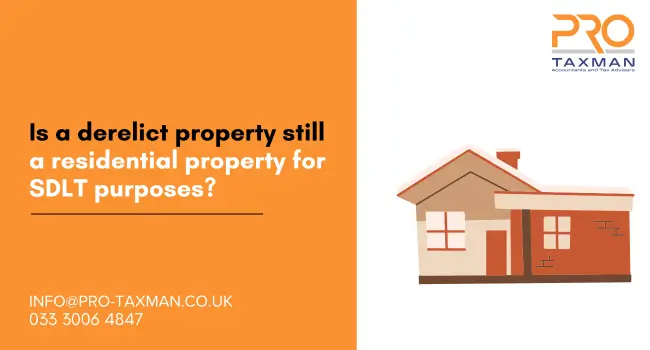The issue of whether a derelict a residential property and liable to stamp duty land tax (SDLT) at the residential rates was considered by the First-tier Tribunal.
The appellants, Mr and Mrs Mudan, purchased a property in London for £1,755,000. As they already had another residential property, they paid SDLT at the residential rates inclusive of the 3% supplement. They subsequently filed an amended return on the basis that the degree of work needed to make the property suitable for occupation meant that it was not a residential property at the transaction date, and therefore SDLT should have been paid at the lower non-residential rates. HMRC opened an enquiry into the return and concluded that the property was suitable for use as a dwelling at the completion date, and hence the higher residential rates applied. The appellants appealed.
State of the property
Although the property had been occupied as a dwelling shortly before completion, it had been extensively vandalised. The points of entry had been broken, there was an ‘unbearable smell’ in the kitchen, the kitchen units had all been broken, none of the utilities worked and the gas and the electricity were unsafe. All the rooms were a mess. The boiler had been ripped off the wall in the boiler room and, while some of the bathrooms were in a reasonable condition, others had been damaged. The family were unable to move into the property for ten months until work to make it habitable had been completed.
The tribunal judge found that while the property was structurally sound, it was not in a state that a reasonable buyer would consider as habitable. For this to be the case, extensive work was needed, including rewiring, installation of a new boiler and kitchen units, repairing windows and removing rubbish from the garden.
The test
For disrepair to prevent a property from being classed as a dwelling it must be so fundamental that the property would need to be demolished. Previous cases set the bar high – faulty cladding of a type used on Grenfell Towers was not deemed sufficient to render a property derelict, although the presence of asbestos meaning the property had to be demolished and could not be safely occupied was. Consequently, while it was accepted that the property was in a bad state of disrepair, this could be remedied, and the property occupied as a dwelling. At the transaction date, the property was a dwelling, albeit out of repair. Consequently, SDLT was due at the higher residential rates.
Need professional accounting service or tax advice? Contact us to book a 15-min Free Consultation with us today.
To find out more please follow us on Facebook, Twitter, or LinkedIn. Feel free to contact us on 0333 006 4847 or request a call back by texting 075 6464 7474

